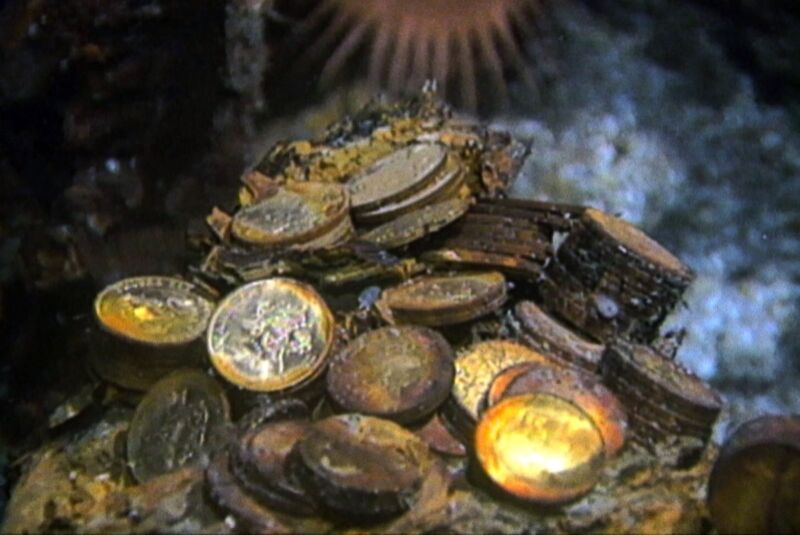Nintendo Launches Music App With Soundtracks from Classic Games Including Super Mario Bros., Legend of Zelda












Any striking marketing claims in companies' ads about the gut benefits of a popular probiotic may be full of, well, the same thing that has their target audience backed up.
In a randomized controlled trial, the probiotic Bifidobacterium animalis subsp. lactis—used in many probiotic products, including Dannon's Activia yogurts—did nothing to improve bowel health in people with constipation, according to data from a randomized triple-blind placebo-controlled clinical trial published Wednesday in JAMA Network Open.
The study adds to a mixed and mostly unconvincing body of scientific literature on the bowel benefits of the bacterium, substrains of which are sometimes sold with faux scientific-sounding names in products. Dannon, for instance, previously marketed its substrain, DN-173 010, as "Bifidus regularis."


© Getty | BSIP
The co-owner of a Chicago-based lab has pleaded guilty for his role in a COVID testing scam that raked in millions—which he used to buy stocks, cryptocurrency, and several luxury cars while still squirreling away over $6 million in his personal bank account.
Zishan Alvi, 45, of Inverness, Illinois, co-owned LabElite, which federal prosecutors say billed the federal government for COVID-19 tests that were either never performed or were performed with purposefully inadequate components to render them futile. Customers who sought testing from LabElite—sometimes for clearance to travel or have contact with vulnerable people—received either no results or results indicating they were negative for the deadly virus.
The scam, which ran from around February 2021 to about February 2022, made over $83 million total in fraudulent payments from the federal government's Health Resources and Services Administration (HRSA), which covered the cost of COVID-19 testing for people without insurance during the height of the pandemic. Local media coverage indicated that people who sought testing at LabElite were discouraged from providing health insurance information.


© Getty | Scott Olson
Any striking marketing claims in companies' ads about the gut benefits of a popular probiotic may be full of, well, the same thing that has their target audience backed up.
In a randomized controlled trial, the probiotic Bifidobacterium animalis subsp. lactis—used in many probiotic products, including Dannon's Activia yogurts—did nothing to improve bowel health in people with constipation, according to data from a randomized triple-blind placebo-controlled clinical trial published Wednesday in JAMA Network Open.
The study adds to a mixed and mostly unconvincing body of scientific literature on the bowel benefits of the bacterium, substrains of which are sometimes sold with faux scientific-sounding names in products. Dannon, for instance, previously marketed its substrain, DN-173 010, as "Bifidus regularis."


© [CDATA[Getty | BSIP]]
The co-owner of a Chicago-based lab has pleaded guilty for his role in a COVID testing scam that raked in millions—which he used to buy stocks, cryptocurrency, and several luxury cars while still squirreling away over $6 million in his personal bank account.
Zishan Alvi, 45, of Inverness, Illinois, co-owned LabElite, which federal prosecutors say billed the federal government for COVID-19 tests that were either never performed or were performed with purposefully inadequate components to render them futile. Customers who sought testing from LabElite—sometimes for clearance to travel or have contact with vulnerable people—received either no results or results indicating they were negative for the deadly virus.
The scam, which ran from around February 2021 to about February 2022, made over $83 million total in fraudulent payments from the federal government's Health Resources and Services Administration (HRSA), which covered the cost of COVID-19 testing for people without insurance during the height of the pandemic. Local media coverage indicated that people who sought testing at LabElite were discouraged from providing health insurance information.


© [CDATA[Getty | Scott Olson]]
Music theory is the study of the fundamental elements that make up music, offering a framework for understanding how melodies, harmonies, and rhythms work together. For musicians, songwriters, and music enthusiasts, mastering the basics of music theory can unlock the ability to create, analyze, and appreciate music on a deeper level. In this article, we’ll explore the core principles of music…
Festival season is an exciting time for music, art, and self-expression, and festival fashion plays a big role in setting the tone for the experience. Festivals are not only a place to enjoy your favorite bands or performances but also a stage for bold, creative, and eclectic fashion statements. Over the years, festival fashion trends have evolved, combining comfort with edgy…

As part of Nissan’s plans to create cleaner and more sustainable vehicles, the Japanese car manufacturer has been trialing ‘cool paint’ technology in the hopes of lowering internal car temperatures and reducing energy usage.

Enlarge / Astrobotic's Peregrine lander, with some of its propellants visible, before shipment from the company's headquarters in Pittsburgh to the launch site in Florida. (credit: Astrobotic)
Seven months after its first lunar lander fell short of reaching the Moon, Astrobotic announced Tuesday that the spacecraft was stricken by a valve failure that caused a propellant tank to burst in orbit. The company's next landing attempt, using a much larger spacecraft, will include fixes to prevent a similar failure.
Astrobotic's first Peregrine lander, which the company called Peregrine Mission One, launched on January 8 aboard United Launch Alliance's first Vulcan rocket. But soon after separating from the rocket in space, the lander ran into trouble as it stepped through an activation sequence to begin priming its propulsion system.
A review board determined "the most likely cause of the malfunction was a failure of a single helium pressure control valve called a PCV—pressure control valve 2, within the propulsion system," said John Horack, a space industry veteran and professor of aerospace and mechanical engineering at Ohio State University.

Enlarge / Cursed Gold: A Shipwreck Scandal documents the spectacular rise and fall of treasure hunter Tommy Thompson. (credit: Recovery Limited Partnership Liquidating Trust)
Many people dream of finding lost or hidden treasure, but sometimes realizing that dream turns out to be a nightmare. Such was the case for Tommy Thompson, an American treasure hunter who famously beat the odds to discover the location of the SS Central America shipwreck in 1988. It had been dubbed the "Ship of Gold" since it sank in 1857 laden with 30,000 pounds of gold bars and coins—collectively worth enough money to have some impact on the Panic of 1857 financial crisis.
Thompson and his team recovered significant amounts of gold and artifacts to great fanfare, with experts at the time suggesting the trove could be worth as much as $400 million. The euphoria proved short-lived. Thirty-nine insurance companies filed lawsuits, claiming the gold was rightfully theirs since the companies had paid damages for the lost gold back in the mid-19th century. Thompson eventually prevailed in 1996, when courts awarded him and his discovery team 92 percent of the gold they'd recovered.
But actually realizing profits from the gold proved challenging; In the end, Thompson sold the gold for just $52 million, almost all of which went to pay off the massive debt the project had accumulated over the ensuing years. So naturally, there were more lawsuits, this time from the investors who had financed Thompson's expedition, accusing him of fraud. Thompson didn't help his case when he went on the run in 2012 with his assistant, living off some $4 million in assets stashed in an offshore account.

Enlarge (credit: Olga Pankova/Moment via Getty Images)
In 2019, an agency within the US Department of Defense released a call for research projects to help the military deal with the copious amount of plastic waste generated when troops are sent to work in remote locations or disaster zones. The agency wanted a system that could convert food wrappers and water bottles, among other things, into usable products, such as fuel and rations. The system needed to be small enough to fit in a Humvee and capable of running on little energy. It also needed to harness the power of plastic-eating microbes.
“When we started this project four years ago, the ideas were there. And in theory, it made sense,” said Stephen Techtmann, a microbiologist at Michigan Technological University, who leads one of the three research groups receiving funding. Nevertheless, he said, in the beginning, the effort “felt a lot more science-fiction than really something that would work.”
That uncertainty was key. The Defense Advanced Research Projects Agency, or DARPA, supports high-risk, high-reward projects. This means there’s a good chance that any individual effort will end in failure. But when a project does succeed, it has the potential to be a true scientific breakthrough. “Our goal is to go from disbelief, like, ‘You're kidding me. You want to do what?’ to ‘You know, that might be actually feasible,’” said Leonard Tender, a program manager at DARPA who is overseeing the plastic waste projects.

Enlarge (credit: Diamond Shruumz)
The number of poisonings connected to Diamond Shruumz-brand microdosing candies has reached 145 cases across 29 states. Since the illnesses first came to light in early June, 59 of those sickened have required hospitalization, and health officials have reported people having seizures, needing intubation, and being admitted to intensive care units. Two deaths are under investigation. Yet, despite tireless efforts to analyze the candies' components, the cause of the poisonings remains a mystery.
Diamond Shruumz suggestively markets the chocolates—as well as its gummies and candy cones—as containing psychedelic drugs but doesn't say what's in them exactly. They're only said to contain a "primo proprietary blend of nootropic and functional mushrooms," and the company has identified non-hallucinogenic mushrooms, including Lion's mane, Reishi, and Chaga.
In its latest investigation update Monday, the Food and Drug Administration laid out the testing results of 22 chocolate bars from Diamond Shruumz—and the list of illicit and troubling drugs found keeps growing. Stunningly, none of the drugs found so far can alone explain the severe illnesses.

Enlarge / Composite image showing color variation of emerald green bookcloth on book spines, likely a result of air pollution (credit: Winterthur Library, Printed Book and Periodical Collection)
In April, the National Library of France removed four 19th century books, all published in Great Britain, from its shelves because the covers were likely laced with arsenic. The books have been placed in quarantine for further analysis to determine exactly how much arsenic is present. It's part of an ongoing global effort to test cloth-bound books from the 19th and early 20th centuries because of the common practice of using toxic dyes during that period.
Chemists from Lipscomb University in Nashville, Tennessee, have also been studying Victorian books from that university's library collection in order to identify and quantify levels of poisonous substances in the covers. They reported their initial findings this week at a meeting of the American Chemical Society in Denver. Using a combination of spectroscopic techniques, they found that several books had lead concentrations more than twice the limit imposed by the US Centers for Disease Control (CDC).
The Lipscomb effort was inspired by the University of Delaware's Poison Book Project, established in 2019 as an interdisciplinary crowdsourced collaboration between university scientists and the Winterthur Museum, Garden, and Library. The initial objective was to analyze all the Victorian-era books in the Winterthur circulating and rare books collection for the presence of an arsenic compound called cooper acetoarsenite, an emerald green pigment that was very popular at the time to dye wallpaper, clothing, and cloth book covers. Book covers dyed with chrome yellow—favored by Vincent van Gogh—aka lead chromate, were also examined, and the project's scope has since expanded worldwide.